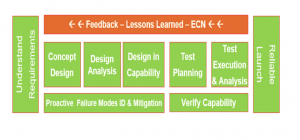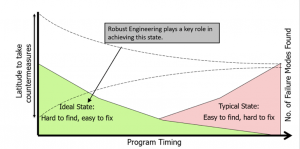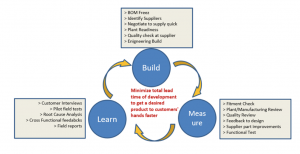Developing new, reliable products to meet the paint market’s needs with well-defined product lifecycle processes
Published on: 19 December 2022To serve the paint industry globally, FFM Asia is engineering and developing ‘colorful solutions, reliable to the core in every tinting process worldwide’ such as dispensers, paint mixers, and shakers.
FFM Asia has launched many new products in Asia to meet customer needs.
We developed machines with full enclosures such as X-SMART PRO and iNSPiRE to ensure rigidity and durability of the machines.
Product development cycle
Every new product design at FFM follows IDEX values. The IDEX difference provides core behaviors that lead to excellent outcomes. New products go through a systematic product design and development cycle. And it all starts with understanding our customers’ needs and ends with delivering a trustworthy product to the market.
Understanding customer needs
As for the requirements for product design, it all depends on the target audience and we mainly look at two options. The first is when the product is designed for the widest possible audience while the second option implies the existence of clear specific customer requirements for product design.
FFM Asia adapts both these approaches and develops products that perfectly suit market needs. A great example is our X-SMART paint dispenser developed for the global market to serve the tinting needs of small and mid-size paint outlets. It dispenses 16 colorants sequentially to get the required shades. A few other products such as X-SMART XL with 24/28/32 canisters are designed for specific customers to solve their unmet needs. The GX300 mixer and SK300 shaker are designed to serve the mixing needs of customers across the globe.
Products such as Blendorama (tabletop version of dispenser) and GX300 (110v for LATAM market) are customized and certified (CE and UL) to serve local market needs as well. Our engineering team has incorporated IDEX principles to ensure the 80/20 rule is present with customers as trusted, collaborative partners. At FFM, we primarily understand our needs through empathetic listening and humble curiosity.
Product design
The designing of products undergoes different milestones with set deliverables.
- Creating a technical specification product through customer requirement understanding
- Concept generation through analysis-led design
- Building alpha and beta prototypes to prove concepts are conducting functional and reliability tests before the pilot is built
The engineering team leads these activities by forming a team to ‘empower exceptional talent’ that lives our values of trust, team, and excellence. This great team achieves results through the alignment of priorities and accountability.
- Technical Specifications
The engineering team understands various requirements of products which the marketing and product teams discuss with customers. They document all critical functional requirements (CFR) in terms of measurable quantity — from deliverables to product outcomes. Engineers segregate the requirements as ‘must have’ and ‘wish to have’ to build a product architecture. The product is designed accordingly with all base features; including those mentioned as ‘must have’ in technical specifications. All the ‘wish to have’ requirements can be created as variants in the product to meet specific customer requirements. Customers who do not want to buy special features can order the base product to meet their value proposition.
- Concept Design
Product design provides a comprehensive understanding of what the final product would look, feel, and work like. It explains which tasks it will solve and the tools it will use. The design team brainstorms to generate ideas for products that will solve customer problems. Formally, product design follows three fundamental elements: Form, Fit, and Function. The quality is always top-notch throughout these three elements. Engineering sketches and creates CAD designs of the product’s architecture with different concepts. All the concepts are evaluated through basic calculations, analysis-led design, design for manufacturability (DFM), design for assembly (DFA), design for serviceability (DFS), and design for reliability (DFR). Once a concept is selected with these parameters in mind, the detailed design process starts. The team then finalizes CAD models, creates drawings, and shares them with suppliers to buy components for the alpha prototype.
- Alpha and Beta Build
The alpha prototype gives customers clarity about the dimensions of all components and whether they fit well as per specifications. The inward quality team checks all the parts for quality and ensures Critical to Quality (CTQ) dimensions so that different parts match their drawings. Once the quality team gives the go-ahead to the components, the engineering team builds alpha prototypes. These prototypes are often built with raw production methods such as 3D printing and handmade tooling to ensure the manufactured product meets form requirements as per design. The quantity of alpha prototypes varies from two to five; depending on which test cycles the product will go through. Alpha goes through primary testing to ensure all parts are performing as per their specifications. The engineering, operations, quality, and sourcing teams conduct a final review to capture the requirements of the beta prototype.
Beta prototypes are built with tooled, moulded components and tested with real colorants to meet performance criteria. The product undergoes functional testing to ensure accuracy, performance, and endurance as a reliable product deliverable.
- Product Validation
Testing of samples allows timely identification of any product flaws and inconsistencies in alpha and beta requirements. This takes place as a rule before we begin the implementation of every expensive procedure.
There is a robust engineering philosophy followed to ensure the product meets our reliability targets.
According to the ‘Failure Mode Avoidance Philosophy’, all failure modes are used to identify when design must start. This is based on previous product experiences, warranty claims on similar products, and brainstorming amongst cross-functional teams. It is easy to prepare a risk mitigation plan at the start of the project as compared to fixing the issue toward the end of the project. This avoids delays in the product launch.
- Reliability must be ‘designed in’ early in the development
- Avoid past mistakes using lessons learned during the process
- Consider noises that cause variation in functional response
Pilot and Launch of Products
Once a product completes its design and development lifecycles, it is ready for customers to test and share their feedback/experience. If they approve the product, the tooling kick-off takes place and the production lot releases the product to customers according to their desired quantities.
- Continuous Engagement with Customer
FFM ensures that IDEX understands customer experiences with regard to products and gets continuous feedback during beta and pilot builds. This way, products are improvised regularly based on customer feedback. Our GX300 beta machines are tested at customers’ and dealers’ sites for performance and user experience. Customer feedback is incorporated in products such as dual door locks, on/off switch, multican compatibility, and rat entry prevention. During development cycles, we ensure a lean build for each prototype milestone. The ‘lean start-up’ provides a scientific approach to creating, managing, and getting the desired product to the customer’s hands faster. This method helps drive a start-up on when to steer, turn, persevere, and grow a business with maximum acceleration. The ‘Build-Measure-Learn’ cycle ensures continued engagement of customers with FFM and gets continued feedback to improve the product.
FFM has successfully adapted to the IDEX mission statement of ‘engaging our shareholders and employees to create value and positively impact the communities in which we live and work’. It helps deliver reliable products to customers and ensure their satisfaction. We continue to follow IDEX values of trust, team, and excellence. We are dedicated to making and keeping our commitments. We design and develop products to make a positive impact on businesses. And finally, we work with an obsessive orientation toward solving customer problems.




